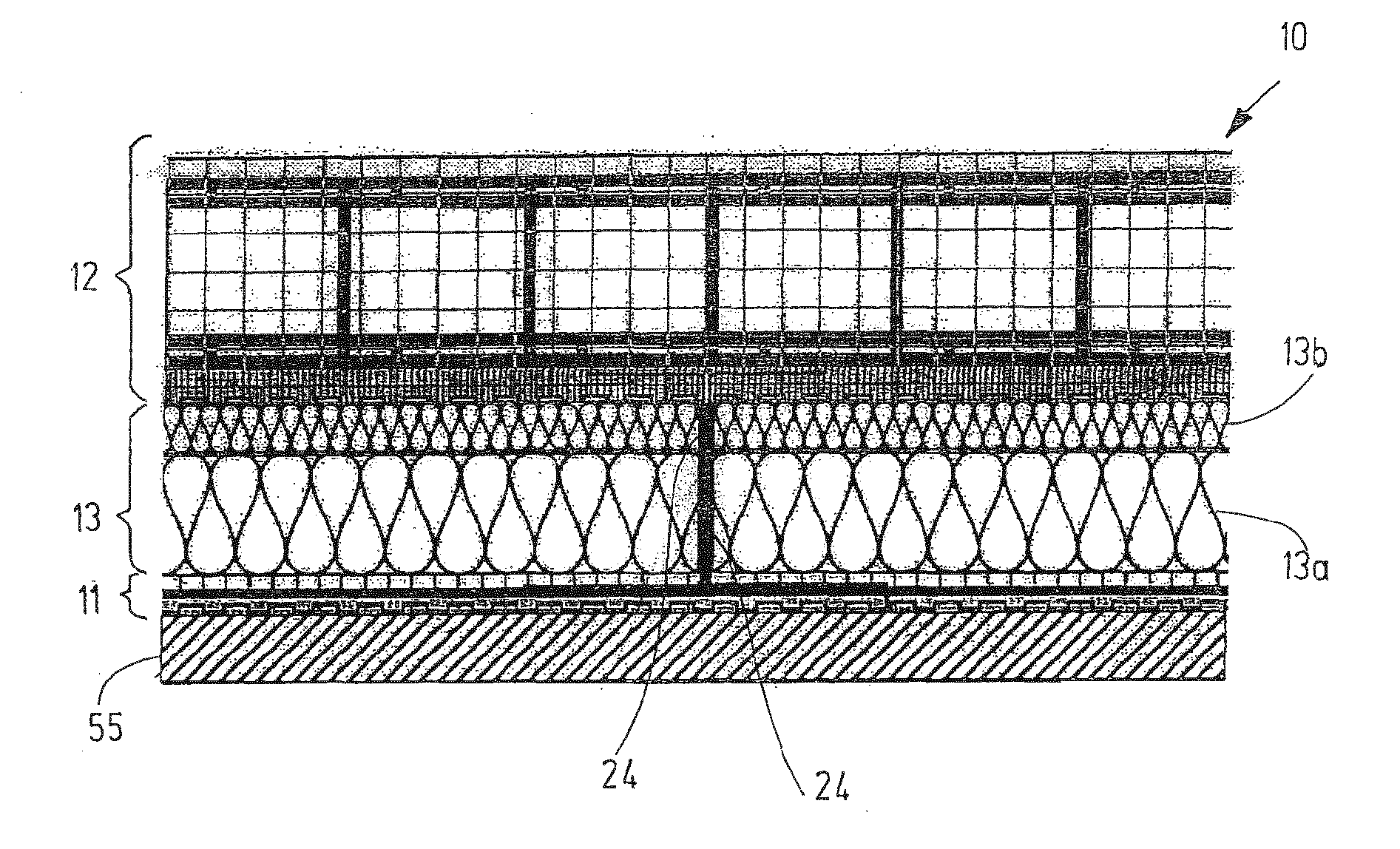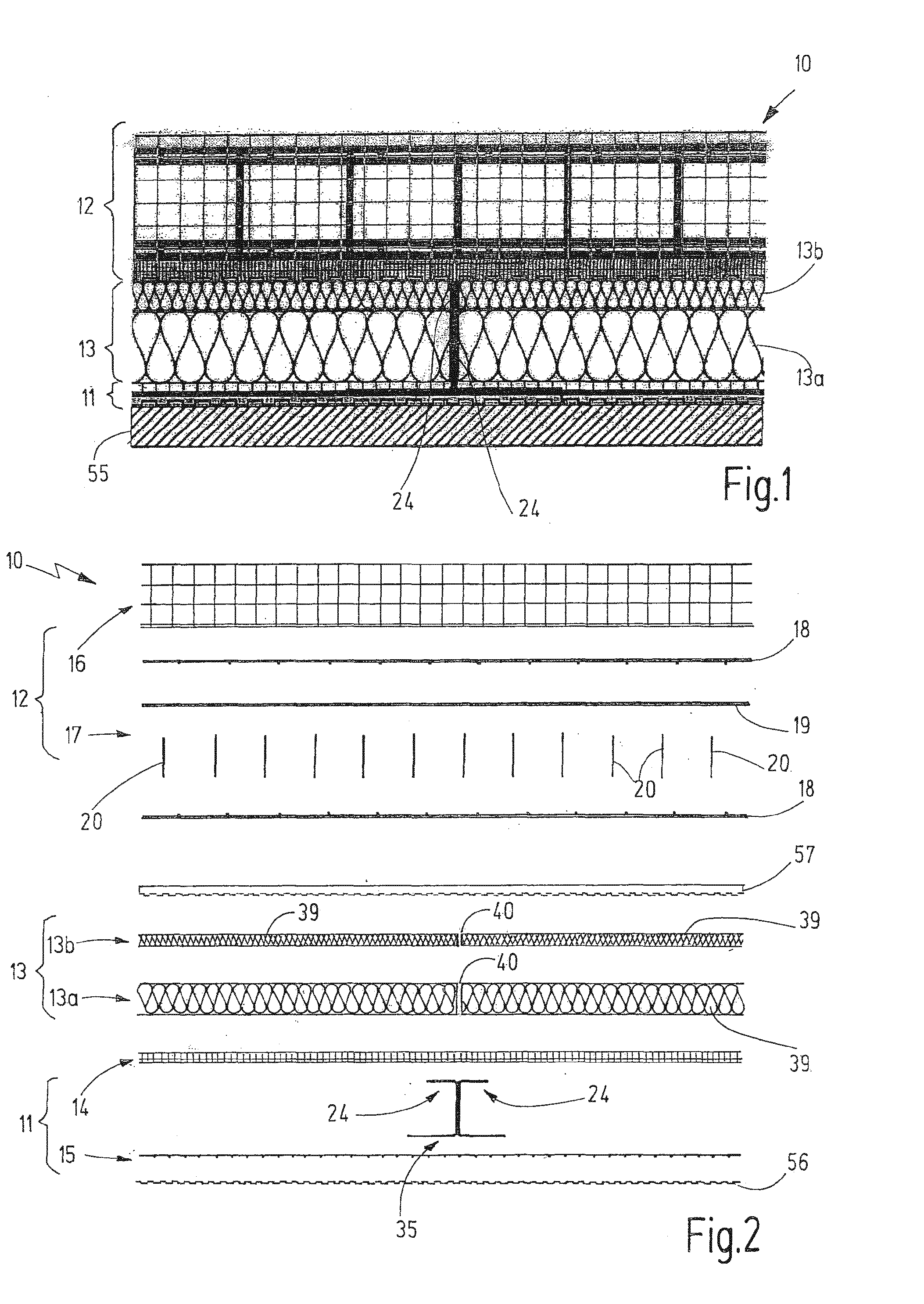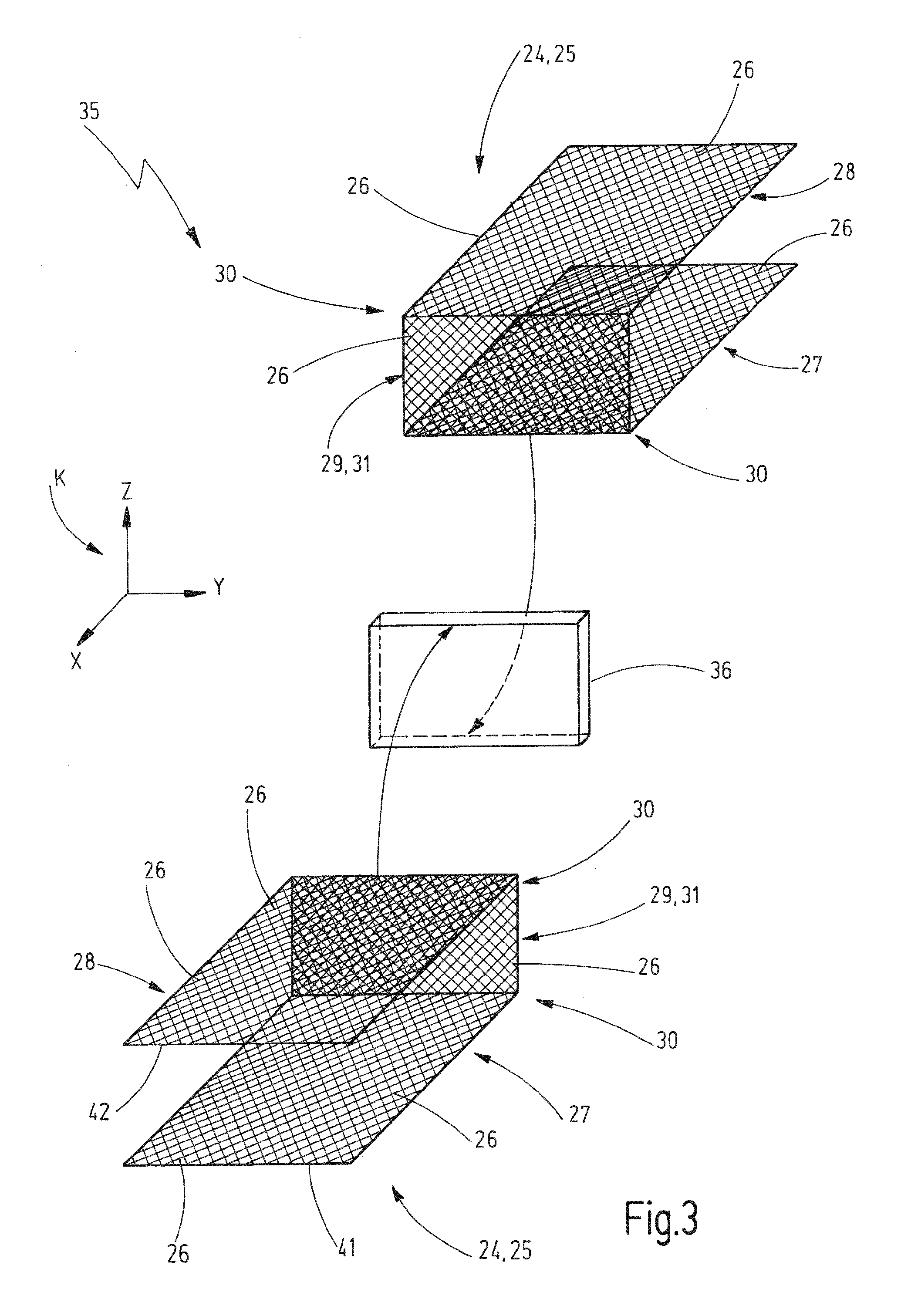Structural element and method for producing a structural element
a technology of structural elements and manufacturing methods, applied in the field of structural elements, can solve problems such as inferior heat conduction, and achieve the effect of efficient and economical manufactur
- Summary
- Abstract
- Description
- Claims
- Application Information
AI Technical Summary
Benefits of technology
Problems solved by technology
Method used
Image
Examples
Embodiment Construction
[0026]Referring now more particularly to FIGS. 1 and 2 of the drawings, there is shown in illustrative structural element 10 in accordance with the invention. The structural element 10 has a facing shell 11, a supporting shell 12, and an insulating layer 13 arranged between the facing shell and the supporting shell. The insulating layer 13 can be formed by a plurality of insulating layers with the same or different thickness. As required, the insulating layers can consist of a different material. In the exemplary embodiment, provision is made for a first insulating layer 13a and for a second insulating layer 13b which preferably rest directly against one another. The stacks of the insulating layers 13a, 13b can be offset to one another. Connecting bodies 24 are arranged in position and / or are spaced apart from one another such that common insulating board measurements can be used. If the insulating layer 13 consists only of a single insulating layer, the stack is formed by means of ...
PUM
| Property | Measurement | Unit |
|---|---|---|
| thickness | aaaaa | aaaaa |
| thickness | aaaaa | aaaaa |
| thickness | aaaaa | aaaaa |
Abstract
Description
Claims
Application Information
 Login to View More
Login to View More - R&D
- Intellectual Property
- Life Sciences
- Materials
- Tech Scout
- Unparalleled Data Quality
- Higher Quality Content
- 60% Fewer Hallucinations
Browse by: Latest US Patents, China's latest patents, Technical Efficacy Thesaurus, Application Domain, Technology Topic, Popular Technical Reports.
© 2025 PatSnap. All rights reserved.Legal|Privacy policy|Modern Slavery Act Transparency Statement|Sitemap|About US| Contact US: help@patsnap.com



